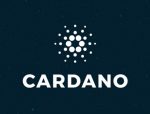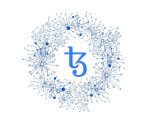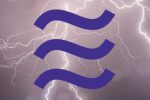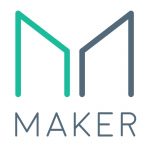This article will present various investment possibilities within the current stablecoin environment. We will discuss the advantages and issues of each type of stablecoin, as well as present examples of current contenders on the market.
| At eToro you can trade 49 currency pairs, including several cryptocurrencies. Join eToro |
Table of Contents
Types of stablecoins
Stablecoins are currencies pegged to an asset: fiat currency, an asset (gold or precious metals), or another cryptocurrency. There are also algorithmic stablecoins, requiring no peg. Traders use stablecoins to protect against market corrections and to trade with leverage. You can read more about what a stablecoin is and why they are important here.
Asset-backed
Backing a stablecoin with fiat is also called IOU issuance. This stems from the nature of how these coins work. A (centralised) entity issues tokens that can be redeemed for fiat currency. They are digital representations of fiat money (for example, the US dollar). When you buy these tokens, the entity issues an equal number of IOUs to be stored in its (centralised) reserves. When you redeem (sell) fiat-backed tokens for its pegged currency, you receive an equal value in dollars, and the tokens you redeemed are destroyed.
Advantages of the IOU model
It’s easy to understand, which is an advantage in and of itself. Moreover, as the reserves are held in fiat (or another “traditional” asset, such as gold), this model can withstand volatility in the crypto market. It should also be said that this makes it the most stable model currently on the market.
Issues of the IOU model
Counterparty risk in asset-backed stablecoins relates to the risk the company does not hold as much in its reserves as it should (see, for example, Tether controversy – explained below). As the model requires users to trust an entity and a bank that stores the currency reserves, centralisation is one of its main drawbacks. Additionally, in order to foster trust, the model calls for frequent audits, which may be expensive and time-consuming.
Regulation can be considered either an advantage or an issue, depending what kind of investor you are. Because of the strong relationship to traditional assets (fiat, precious metals), this type of stablecoin is often highly regulated.
Let’s take a look at the current applications of this model.
 Tether (USDT) is the biggest stablecoin right now. USDT tokens are issued on the the Omni Layer – the platform that allows you to build assets on the Bitcoin blockchain. Tether is an asset-backed stablecoin, redeemable 1:1 for US Dollar.
Tether (USDT) is the biggest stablecoin right now. USDT tokens are issued on the the Omni Layer – the platform that allows you to build assets on the Bitcoin blockchain. Tether is an asset-backed stablecoin, redeemable 1:1 for US Dollar.
While it has been having issues for quite some time now, it is still the most popular stablecoin by market cap. And more importantly to traders, it is the most liquid one.
This, however, might not last long. Tether’s price broke on October 15th, plunging down to $0.88, and it hasn’t recovered to $1 since ($0.98 at the time of writing). This may be due to the declining trust in the token, stemming from the fact that Tether still hasn’t proven that it holds sufficient reserves. Tether is also very closely related to the Bitfinex exchange, and the relationship is often criticised by the community. The allegations of price manipulation have also eroded trust in the company (you can find a discussion and statistical analysis of this claim here).
 TrueUSD (TUSD) is an ERC20 token, backed by the US Dollar (1:1). It launched in March, 2018, as the first token of TrustToken, an asset tokenization platform.
TrueUSD (TUSD) is an ERC20 token, backed by the US Dollar (1:1). It launched in March, 2018, as the first token of TrustToken, an asset tokenization platform.
One of the advantages of TUSD is their focus on regulatory compliance, with mandatory KYC/AML verifications. The company holds its reserves in multiple escrow accounts in various trusted third parties they have partnered with, which mitigates counterparty risk. Moreover, the trust companies deal directly with users via smart contracts, which means the TrueUSD team does not have access to users’ funds, and is not involved in transfers of funds. Cohen & Co, a top audit firm, regularly attests that TUSD in fully collateralized. Despite being launched only a few months ago, it already has the second highest daily trading volume (which translates into liquidity).
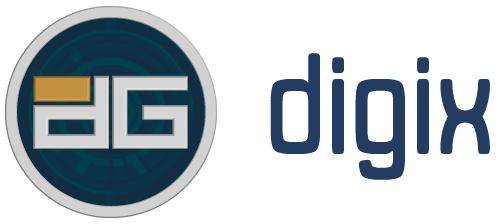
DigixDAO is a decentralised autonomous organisation, which decided to create a token backed by one of the oldest store-of-value assets – gold.
Two tokens are issued, DGX (ERC20), which is redeemable 1 DGX for 1 gram of gold. They are created when users purchase DGX token via the Digix gold marketplace. The second token, DGN, is an ERC20 governance token. It allows its holders to make managerial decisions and grants them voting rights. DGN holders are rewarded with DGX with fees from the ecosystem.
| At eToro you can trade 49 currency pairs, including several cryptocurrencies. Join eToro |
Crypto-collateralized
Stablecoins don’t have to be backed by fiat currency or physical assets, some of the current applications utilise other cryptocurrencies as collateral. This allows both the stablecoins and the reserve to be on the Blockchain. On the other hand, in order to compensate for the volatility of the underlying asset (crypto), the stablecoins in this model are overcollateralized. That is, the value of the crypto collateral you put up is higher than the value of the stablecoins you get in return.
Advantages of the model
This model exists fully on the Blockchain, which makes it more decentralised. Since all that is required to switch between collateral and the stablecoin is a blockchain transaction, users can quickly liquidate their holdings into the crypto collateral. Furthermore, it allows more experienced traders to trade with leverage.
Issues of the model
One of the main challenges is its vulnerability to black swan events (when the price of the underlying asset suddenly crashes) and relative instability. The model is also quite complicated to understand. This model may also have issues with scalability, as (depending on the level of overcollateralization) the demand for stablecoins may some day exceed the demand for the underlying cryptocurrency asset.
Overcollaterization is an inherent requirement of the crypto-backed model. Some users believe overcollaterization to be worth the other advantages, while others may consider it as an inefficient use of capital.
Here are a few examples of crypto-collateralized stablecoins.
 MakerDAO is another decentralised autonomous organisation with two tokens. Dai (DAI) is a stablecoin, while Maker (MKR) is a governance token.
MakerDAO is another decentralised autonomous organisation with two tokens. Dai (DAI) is a stablecoin, while Maker (MKR) is a governance token.
Maker has several advantages. The project is relatively old, almost 4 years (ancient in crypto-years), and the team spent a lot of time discussing, preparing, and building a value offering that makes sense. Although often acclaimed for its sensible mechanisms, Maker’s Dai and MKR tokens are considered one of the most complicated stablecoins. However, most of their users don’t have to know all the details about how it works, as it is possible to trade Dai via exchanges. MakerDAO often announces partnerships, the latest being Digix (mentioned above), and Wyre, a Blockchain money transfer startup.
One of the main advantages of Dai will be its next iteration (coming at the end of 2018), which will make it world’s first multi-asset backed stablecoin (the current version is a single-collateralised token backed by Ethereum). Supporting Dai with additional cryptocurrencies will make the system more resilient, less dependent on the underlying asset (Ethereum), less vulnerable to black swan events (which are a big issue of this model, as explained earlier), and able to scale better. This makes MakerDAO an interesting project to follow.
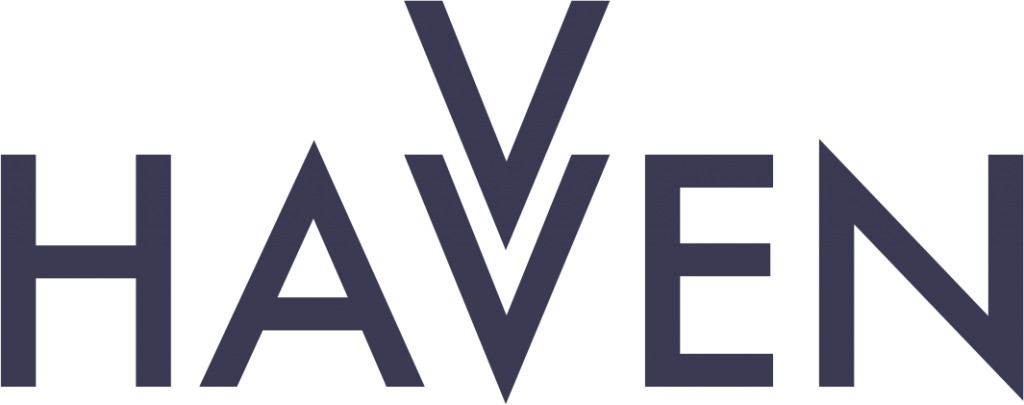 Havven also employs a dual-token system, with Nomins and Havvens. Nomin is the stablecoin, currently pegged to USD (nUSD). However, there are plans to peg Havven to to other currencies in the future, including euro and yen. All Nomins are backed by Havven tokens. Holders of Havven tokens issue Nomins, and are rewarded with fees.
Havven also employs a dual-token system, with Nomins and Havvens. Nomin is the stablecoin, currently pegged to USD (nUSD). However, there are plans to peg Havven to to other currencies in the future, including euro and yen. All Nomins are backed by Havven tokens. Holders of Havven tokens issue Nomins, and are rewarded with fees.
The advantage of Havven is that it does not rely on an outside source for collateralization. While other projects rely on fiat currency stored with a third-party, gold, or Ethereum, Havven has chosen a different approach. On the other hand, it has a quite low market cap, and a small daily trading volume. However, as it was launched only a few months ago in June, it might need a little time to really get going.
| At eToro you can trade 49 currency pairs, including several cryptocurrencies. Join eToro |
Non-collateralized
This type of a stablecoin model is also called seigniorage shares. Instead of putting up collateral, users are promised future profits of the company, so the model is in fact backed by future dividends. The model works much like a central bank, contracting and expanding as needed. However, this functionality is fulfilled algorithmically. Smart contracts, with a single goal of keeping the price stable at $1, automatically take action when the price deviates. Should the price rise, more stablecoins are minted and offered in an auction, increasing the supply and eventually bringing the price to the desired level. When the price falls, new shares (bonds) are created that users buy with stablecoins (believing that the demand, and hence supply, will increase in the future).
Advantages of the model
The model is fully decentralised, and does not rely on any other asset (self-contained). Even if fiat or cryptocurrency would crash, the non-collateralized coin would remain. Although the model is still experimental, it holds much potential for the future.
Issues of the model
Such models may be vulnerable to death spirals (if demand falls significantly, not enough people may be inlined to buy shares in exchange for tokens, as the chances of the demand for the tokens rising and the shares being paid out are slim), which is a challenge especially in the early stages of the project when the adoption and faith in the system are low. Other criticisms of the model include its resemblance to a pyramid scheme, as the success of the coin depends on new entrants to the system and a perpetual growth in demand (while many fiat currencies have had a steady rise in demand for cash, the same is not given for crypto project).
 Basis (formerly Basecoin) has recently (June, 2018) introduced a stablecoin with an algorithmic central bank. It is the most popular stablecoin of its kind.
Basis (formerly Basecoin) has recently (June, 2018) introduced a stablecoin with an algorithmic central bank. It is the most popular stablecoin of its kind.
The supply of Basis tokens is managed by smart contracts (with the use of an oracle), which act when the price varies from $1, by either issuing new tokens (which are then burned) in exchange for bonds (when the price is above $1), or issuing bonds in exchange for tokens (when the price is below $1). However, the system relies on users’ trust that the system will grow, which is not a given. In fact, this vulnerability to market dips is the main issue of the Basis token. Although it has great potential, many believe their model to be unsustainable.
Which is the best stablecoin?
There is no one ideal stablecoin model. Rather, the investors and users need to decide for themselves which features they value more, and which model they consider to be most sustainable and scalable in the future.
Would you rather be sure that the coin is fully backed, and at the same time not care about decentralisation that much? Choose the regulated, fiat-backed projects. Do you trust in crypto and are unafraid of black swan events? Then crypto-backed stablecoins, such as Dai from MakerDAO, may be your solution.


